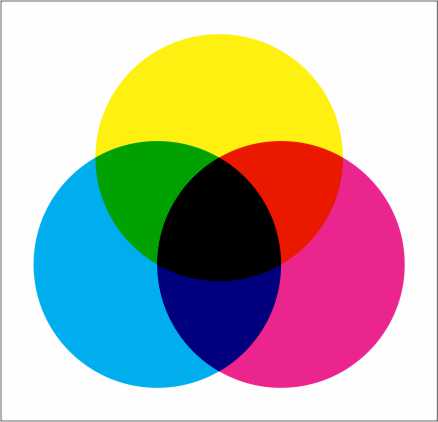Color Theory: The Science of Light, Part II -- Refraction


An image of a prism demonstrating the refractive qualities of light.

Sorry it's taken so long to return to this blog, I lost my password and have been locked-out for the past few months. Luckily, I have found it!
Review of Part I:
- Color Models
Many are taught that the primary colors are Red, Yellow, and Blue, as children. I'm not sure where it started, and I hope that you were lucky enough to learn the correct model. However, this is less often the case.- "CMY" or "CMYK"

This is the model often described to children as being Red, Yellow, and Blue, it is actually Cyan, Magenta, Yellow, and Black. - "RGB" or "RGBW"

*As you probably already knew, this is Red, Green, Blue, and White.
- "CMY" or "CMYK"
- Addition and Subtraction
As it turns out, the two color models are based on the fact that we can only see Red, Green, and Blue light.- Red and Green light will appear to be Yellow, Green and Blue light will appear to be Cyan, and when you mix Blue and Red light, you get Magenta. This is called the Additive Color Model.
- Pigments absorb everything except the colors they reflect, this is called the Subtractive Color Model. For example, when a Cyan paint(that only reflects Blue and Green) is mixed with a Yellow paint( that only reflects Green and Red), the only light that is not being absorbed by the paint mixture is Green. In theatrical lighting, color filters called "gels" are often used to restrict the passage of certain colors of light, and can be layered to achieve the same kind of color mixing.
- Primary and Secondary
To Build upon the last post, these two color models are often referred to as Primary or Secondary to one another.- If you are working in a CMYK "color space", one can create secondary R, G, and B by combining pigments subtractively. Similarly, when working within an RGB "color space", one can create secondary C, M, and Y by way of mixing different colored lights additively.
- In CMYK you can create R, G, or B but you cannot again mix those colors to create CMYK. Likewise, you cannot create C, M, and Y while working in RGB, and mix them back into R, G, and B.
- Color mixing in CMY leads towards black creating darker "shades", while color mixing in RGB leads towards white creating "highlights".
Part II: Refraction

An image of rainbows from a CD refracted through water droplets.
"Mommy, why is the sky blue?"
Definition:
"Refraction is the bending of light [...] as it passes
from one transparent substance into another." *
This is the property of light
...that explains many things, like why it is difficult to fish with a spear, how you can focus an image on the retina in the back of your eyelid, and oddly enough: why the sky is blue.
- The Refractive Index is defined by the speed of light in a vacuum divided by the phase velocity of light in an optical medium. So, as an example, the Refractive Index of a colorless diamond is 2.417, meaning that light travels almost two and a half times slower through diamond, than it does through a vacuum.
- Angles: Without going into too much detail, the Refractive Index is directly related to the angle at-which a ray of light is refracted by a specific medium. The greater the Refractive Index, the greater the change in direction.
- Chromatic Dispersion or simply "dispersion" is the idea that light of different frequencies refract at different rates through certain mediums.
- The simplest example is that of a prism, where white light is split into a rainbow because of the difference in phase velocity as you move through the optical spectrum.

Diamonds acting as prisms, creating rainbows. - Other examples are actual rainbows appearing in the sky, due to refraction by raindrops, and even the change in color from blue to red, as the white light traveling through the vacuum of space from the sun is refracted as it enters the atmosphere of the earth.

A clear image of a sunset creating reds and violets as the light is refracted through the atmosphere at a low angle.
- The simplest example is that of a prism, where white light is split into a rainbow because of the difference in phase velocity as you move through the optical spectrum.

Don't forget to check out @ksolymosi's excellent series on the Psychology of Color: https://steemit.com/psychology/@ksolymosi/the-psychology-of-colours-part-1-introduction

Sauces and For More Info:
*https://www.sciencelearn.org.nz/resources/49-refraction-of-light
https://en.wikipedia.org/wiki/Refractive_index
http://hyperphysics.phy-astr.gsu.edu/hbase/Tables/indrf.html
https://en.wikipedia.org/wiki/Phase_velocity
https://en.wikipedia.org/wiki/Dispersion_(optics)
https://pixabay.com/en/optics-prism-light-beam-light-guide-113366/
https://pixabay.com/en/disc-cd-colorful-round-277445/
https://pixabay.com/en/diamonds-stone-gemstone-jewel-gem-1216849/
https://pixnio.com/nature-landscapes/sunset/sunsets-purple
Congratulations @lightingnerd! You received a personal award!
Click here to view your Board
Congratulations @lightingnerd! You received a personal award!
You can view your badges on your Steem Board and compare to others on the Steem Ranking
Vote for @Steemitboard as a witness to get one more award and increased upvotes!